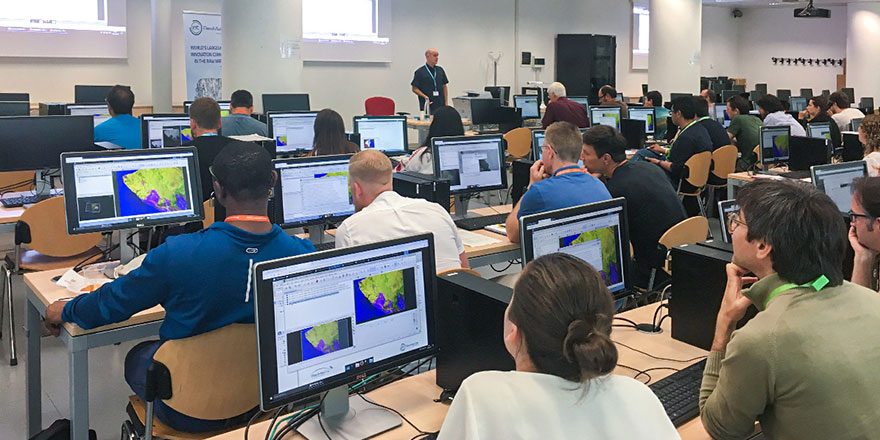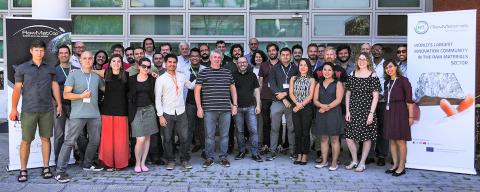How EIT RawMaterials works with data from the Copernicus satellite

Training with Copernicus satellite data, on how to use Earth Observation for the extractive sector.
The EIT RawMaterials 2019 RawMatCop Academy, the flagship series of short courses delivered by the RawMatCop Programme, took place on 17-20 June 2019 in Bologna, Italy. The RawMatCop Academy provides targeted training on the use of Earth Observation for the extractive sector. The course covers topics within the mining life-cycle and explores various sensors and technologies. Similarly, the course structure follows a modular approach, allowing it to be configured into smaller and targeted courses that can be run in a bespoke manner for individual organisations.
The RawMatCop Academy 2019 received a record number of over 150 applications from applicants located in 40 countries around the world. The 30 successful applicants included professionals and researchers from industry, academia, research centres, public authorities, and NGOs with a background in Earth Observation or the raw materials sector.
During the course, participants heard from experts in the field as well as having the opportunity to work directly with Copernicus satellite data to demonstrate how it can be used for:
- Securing primary and secondary raw materials.
- Safety and environmental impact monitoring.
Practical exercises were delivered by the current cohort of RawMatCop post-doctoral and placement researchers, building on the skills and knowledge they have built through their research projects.
Participant satisfaction has been off the charts this year, and 87 percent of participants ranking the course experience as Good or Excellent. All software used in the RawMatCop Academy is freely available, allowing participants to further develop the applications of what they have learnt at the course in their place of work or in a research context. After EIT RawMaterials 2019 edition of the RawMatCop Academy, 90 percent of participants planned to use what they had learnt in the course in their place of work, contrasting with only 23 percent of participants using Earth Observation prior to the course.



 Share this page
Share this page


